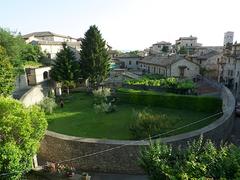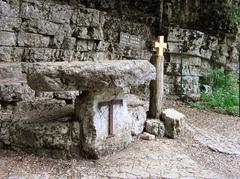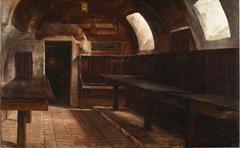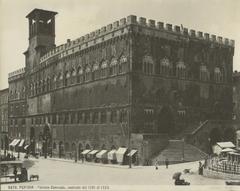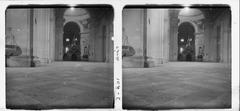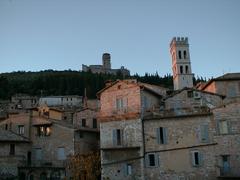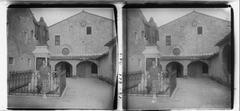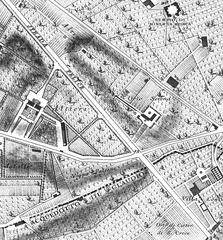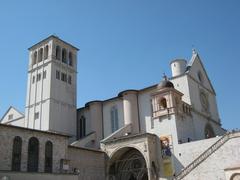Fonte Marcella Visiting Hours, Tickets, and Travel Guide – Assisi Historical Sites
Date: 14/06/2025
Introduction
In the heart of Assisi, Italy, Fonte Marcella stands as a testament to Renaissance civic vision and communal life. Erected between 1556 and 1557 under papal governor Marcello Tuto during Pope Paul IV’s reign, this fountain reflects Assisi’s urban renewal and the Renaissance ideals of civic beauty and utility. More than a source of water, Fonte Marcella was historically a gathering place for residents and visitors, and today it remains freely accessible—a living emblem of Assisi’s heritage and values (keytoumbria.com, lucadea.com).
This guide explores Fonte Marcella’s origins, architectural features, historical significance, visiting information, and its role within the broader context of Assisi’s historic water system. Whether you are a history enthusiast, pilgrim, or casual traveler, you’ll find practical tips and cultural insights for an enriching visit (pilgrimagetraveler.com, maddysavenue.com).
Quick Contents
- History and Construction
- Renaissance Architecture and Inscriptions
- Cultural and Social Importance
- Visiting Hours and Accessibility
- Nearby Attractions and Travel Tips
- Visuals and Media Resources
- Fonte Marcella’s Place in Assisi’s Water System
- Heritage Value and Preservation
- Frequently Asked Questions (FAQ)
- Plan Your Visit
History and Construction
Fonte Marcella, also known as Fontebella, was commissioned by papal governor Marcello Tuto and constructed between 1556 and 1557. The fountain’s Latin inscription immortalizes its patron, and the project was part of Assisi’s broader efforts to modernize its water supply and public spaces in the 16th century (keytoumbria.com).
Built primarily from durable travertine and local stone, the fountain is defined by a rectangular basin and three lion’s head spouts set within a Doric frieze. The use of classical motifs and heraldic arms firmly situates Fonte Marcella in Renaissance tradition, blending functionality with artistic symbolism.
Renaissance Architecture and Inscriptions
Fonte Marcella’s harmonious proportions, Doric frieze, and sculpted heraldic symbols are characteristic of Renaissance civic architecture. The fountain bears the arms of Pope Paul IV and the city of Assisi, reinforcing the dual authority of church and municipality during its construction (keytoumbria.com).
A notable detail is the inscription warning against washing laundry in the fountain, a rule underscoring its intended use as a potable water source and a reflection of pre-modern public health concerns.
Cultural and Social Importance
Fonte Marcella was—and remains—a hub of communal life. Historically known as “fons hospitalis” due to its proximity to the Ospedale della Misericordia, the fountain served local residents, the sick, and passing pilgrims. Its role as a social gathering place and its enduring connection to Assisi’s Franciscan ethos emphasize the city’s longstanding traditions of charity, humility, and hospitality (dalmorogalleryhotel.com).
Today, the fountain continues to be a spot for respite and reflection amid Assisi’s winding streets, echoing the words of Saint Francis in his “Canticle of the Creatures” and reinforcing the spiritual value of water in the city’s culture.
Visiting Hours and Accessibility
- Access: Fonte Marcella is an open-air monument, accessible 24/7, with no entrance fee or ticket required.
- Location: In central Assisi, along Via Fontebella, within walking distance of major sites.
- Accessibility: The area is paved and generally wheelchair accessible, though some surrounding streets are cobblestoned and may be steep.
- Guided Tours: Many local walking tours include Fonte Marcella; audio guides (such as Audiala) are also available for an enhanced experience.
Nearby Attractions and Travel Tips
Fonte Marcella’s central location allows easy combination with visits to other Assisi landmarks:
- Basilica of Saint Francis: Renowned for its frescoes and significance as a pilgrimage site.
- Temple of Minerva: An ancient Roman temple repurposed as a church.
- Piazza del Comune: The bustling civic heart of Assisi.
- Cathedral of San Rufino and Rocca Maggiore: Additional historical highlights.
Travel Tips:
- Visit early morning or late afternoon for fewer crowds and better lighting.
- Wear comfortable shoes for Assisi’s hilly, cobbled streets.
- Bring a reusable water bottle to fill at the fountain.
Visuals and Media Resources
High-quality images of Fonte Marcella and virtual tours are available on tourism and heritage websites (keytoumbria.com, maddysavenue.com). When searching for images online, look for SEO-friendly alt tags such as “Fonte Marcella Renaissance fountain in Assisi” to optimize accessibility and searchability.
Fonte Marcella’s Place in Assisi’s Water System
Fonte Marcella is part of a network of historic fountains that supplied water for households, industry, and healthcare in Assisi. Its construction was integral to the city’s 16th-century modernization and remains an example of Renaissance engineering and civic planning (keytoumbria.com).
Heritage Value and Preservation
Fonte Marcella’s artistic value lies in its balanced proportions, classical restraint, and integration with the urban landscape. Its preservation as a functional, accessible public monument makes it a living link to Assisi’s Renaissance past. The fountain is protected as part of the city’s heritage, and its ongoing maintenance ensures its legacy remains vibrant (lucadea.com, pilgrimagetraveler.com).
Frequently Asked Questions (FAQ)
Q: What are Fonte Marcella’s visiting hours?
A: The fountain is accessible 24/7, all year round.
Q: Is there an entrance fee or ticket required?
A: No, visiting Fonte Marcella is completely free.
Q: Are guided tours available?
A: Yes, Fonte Marcella is included in many walking tours, and audio guides are available.
Q: Is Fonte Marcella wheelchair accessible?
A: The immediate area is generally accessible, though cobblestone streets may require assistance.
Q: Can I drink the water?
A: The fountain is maintained by the city and sources water from a natural spring, but always check for local advisories.
Plan Your Visit
- Combine with a Walking Tour: Gain deeper insight through guided tours or digital audio guides.
- Stay Informed: Check local tourism websites or use the Audiala app for updates and event information.
- Support Responsible Tourism: Respect the site, minimize waste, and engage with local businesses.
- Travel Logistics: Assisi is easily reached by train and bus from larger cities. Parking is available outside the city walls, with pedestrian routes leading to Fonte Marcella.
Conclusion
Fonte Marcella is more than an architectural treasure; it is a symbol of Assisi’s enduring civic spirit and Renaissance heritage. Its open, welcoming presence invites all visitors to pause, reflect, and connect with centuries of tradition. Whether as a historical landmark, a place of refreshment, or a quiet spot for contemplation, Fonte Marcella exemplifies the values that have shaped Assisi for generations.
For further planning resources, updates, and immersive guides, download the Audiala app and follow local tourism channels. Let Fonte Marcella be your gateway to discovering Assisi’s remarkable history and culture.
Sources and Further Information
- Fonte Marcella in Assisi: Visiting Hours, History, and Travel Tips (keytoumbria.com)
- Visiting Fonte Marcella: A Guide to Assisi’s Renaissance Fountain, Historical Significance, and Practical Information (lucadea.com)
- Fonte Marcella Assisi: Visiting Hours, History, and Architectural Highlights (pilgrimagetraveler.com)
- Fonte Marcella Visiting Hours, Tickets & Guide to Assisi Historical Sites (maddysavenue.com)
- Assisi’s Water Sources and the Franciscan Ethos (dalmorogalleryhotel.com)
